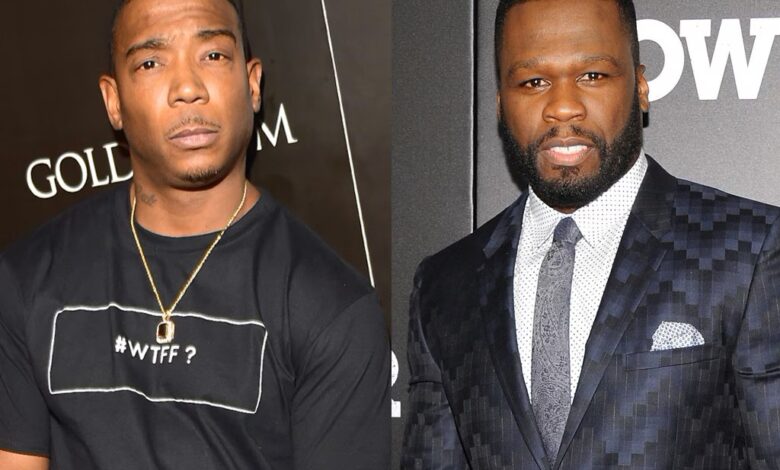Inside 50 Cent and Ja Rule Beef

The feud between 50 Cent and Ja Rule is one of the most talked-about conflicts in hip-hop history. It’s a rivalry that has spanned over decades, full of diss tracks, public insults, and accusations, and has even influenced the direction of hip-hop culture during the 2000s. The beef itself, however, is more than just a personal vendetta—it’s become symbolic of the fierce competition that exists within the music industry, particularly in the rap game.
Origins of the Beef
The origins of the 50 Cent and Ja Rule beef trace back to the late 1990s. 50 Cent, born Curtis James Jackson, was making a name for himself in the underground rap scene, but it wasn’t until his infamous attack in 2000 that the public became aware of him. 50 Cent was shot nine times in front of his grandmother’s house, and the incident led him to take a more aggressive approach to his music. His rise to fame was also fueled by the attention he garnered from his feud with Ja Rule, who at the time was a dominant force in the rap game, known for his gritty street anthems and hit records.
Initially, there wasn’t much of an apparent issue between the two, but it wasn’t long before their paths crossed. The animosity first boiled over when 50 Cent claimed that Ja Rule had ordered the hit on him. While Ja Rule denied these accusations, 50 Cent’s narrative quickly took root in the media. From there, the feud escalated, especially as both artists took shots at each other through diss tracks.
Diss Tracks and Public Insults
The feud truly began to take shape in 2002, when 50 Cent released his first major studio album, Get Rich or Die Tryin’. On this album, he included several tracks that were aimed at Ja Rule, including “Wanksta” and “Back Down.” These songs mocked Ja Rule’s image and alleged lack of authenticity, which 50 Cent claimed was a hallmark of his career.
Ja Rule retaliated with the release of the track “Loose Change,” where he aimed to discredit 50 Cent and his street credibility. This only served to further stoke the flames of the feud, and the rivalry became more public with every new diss track. The media attention turned the feud into a battle for supremacy within the rap industry, as fans, critics, and the artists themselves poured gasoline onto the fire.
In 2003, Ja Rule attempted to capitalize on his fame and expand his brand. His popularity had soared with a series of radio-friendly tracks, but he was also facing increasing scrutiny from the streets, especially with the rise of 50 Cent. Ja Rule’s efforts to fight back through diss records, like “Hate It or Love It” (which was also aimed at 50 Cent), only fueled the competition. At one point, Ja Rule even tried to recruit other rappers to join his side in the war against 50 Cent, including Memphis Bleek and Mobb Deep’s Prodigy.
The Role of the Media
The media played a crucial role in escalating the beef. Both 50 Cent and Ja Rule understood the power of the press, and both were savvy enough to use it to their advantage. 50 Cent, in particular, became known for his self-promotion and clever manipulation of the media narrative. His public persona, often backed by his street credibility, was honed through his beefs with rival artists.
At the same time, Ja Rule’s camp tried to frame him as a misunderstood artist whose tough persona was being unfairly challenged by a newcomer. However, the rivalry was no longer just about music—it was about who could dominate the public’s attention. Ja Rule’s response to 50 Cent became a battle for relevance, while 50 Cent’s success was amplified by his perceived dominance in the battle.
The Peak and Decline of the Beef
The conflict reached its peak in 2004 when 50 Cent dropped “How to Rob,” which specifically referenced Ja Rule and other artists, suggesting that 50 was willing to take down anyone standing in his way. Meanwhile, Ja Rule’s musical career was beginning to falter. While 50 Cent’s Get Rich or Die Tryin’ album went on to become a massive success, Ja Rule’s albums started to experience diminishing returns. Despite this, Ja Rule never backed down, continuing to throw jabs at 50 Cent in interviews and music.
By 2005, 50 Cent was fully entrenched in the mainstream, having achieved monumental success with his G-Unit crew and his debut album. The media began to tire of the beef, and fans began to question whether the ongoing conflict was still relevant or simply an outdated drama. Ja Rule, on the other hand, struggled to reclaim his spot at the top, with his later works failing to recapture the commercial and critical success of his earlier albums.
The Aftermath and Current Status
Though the beef was never officially squashed, both 50 Cent and Ja Rule seemed to move on with their careers. 50 Cent has since transitioned into acting, producing, and business ventures, while Ja Rule attempted to re-enter the spotlight with various music projects and business ventures, most notably his involvement in the infamous Fyre Festival.
In recent years, both artists have occasionally traded barbs on social media, but their rivalry is nowhere near as intense as it once was. In fact, some fans have speculated that the animosity was exaggerated for the sake of publicity, as the two artists have, at times, hinted at being on better terms.
However, the legacy of their beef remains significant in hip-hop culture. It set the stage for a new era of rap rivalries, where beefs were no longer just about dissing one another in the studio but also about branding, media manipulation, and personal attacks.
Today, the 50 Cent and Ja Rule feud is seen as an important chapter in the story of hip-hop, illustrating the lengths to which artists will go to secure their place in the industry. While the animosity may have subsided, the impact of their rivalry continues to resonate, particularly in the way the rap industry handles conflict and public relations.




